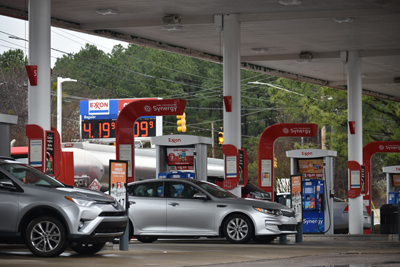The national average for a gallon of gas hit what may be 2023’s peak price of $3.88 early in the week of Sept. 18, only to slide a few cents in the following days. The average as of Sept. 21 is $3.86---a penny more than a week ago.
“The recent drop in the national average, while small, is fairly typical this time of year as much of the country makes the switch to less expensive winter blend gasoline,” said Andrew Gross, AAA spokesperson. “But the gradual seasonal decline in pump prices is being slowed by higher oil costs, hovering around $90 a barrel.”
According to new data from the Energy Information Administration (EIA), gas demand rose slightly from 8.31 to 8.41 million b/d over the week since Sept. 14. Meanwhile, total domestic gasoline stocks declined slightly from 220.3 to 219.5 million bbl. Higher gas demand, amid tighter supply, has contributed to elevated pump prices, but oil remaining above $90 per barrel continues to steer the price increases seen by drivers.
The Sept. 21 national average of $3.86 is the same as a month ago but 18 cents more than a year ago.
Since Sept. 14, these 10 states have seen the largest changes in their averages: Nevada (+33 cents), California (+29 cents), Georgia (+15 cents), Arizona (+14 cents), Iowa (+11 cents), Florida (+8 cents), North Dakota (+8 cents), Minnesota (+8 cents), Utah (+7 cents) and Oklahoma (+7 cents).
The nation’s top 10 most expensive markets: California ($5.79), Nevada ($5.06), Washington ($5.04), Hawaii ($4.83), Oregon ($4.68), Arizona ($4.65), Alaska ($4.60), Utah ($4.25), Montana ($4.19) and Idaho ($4.14).










Abby Andrews